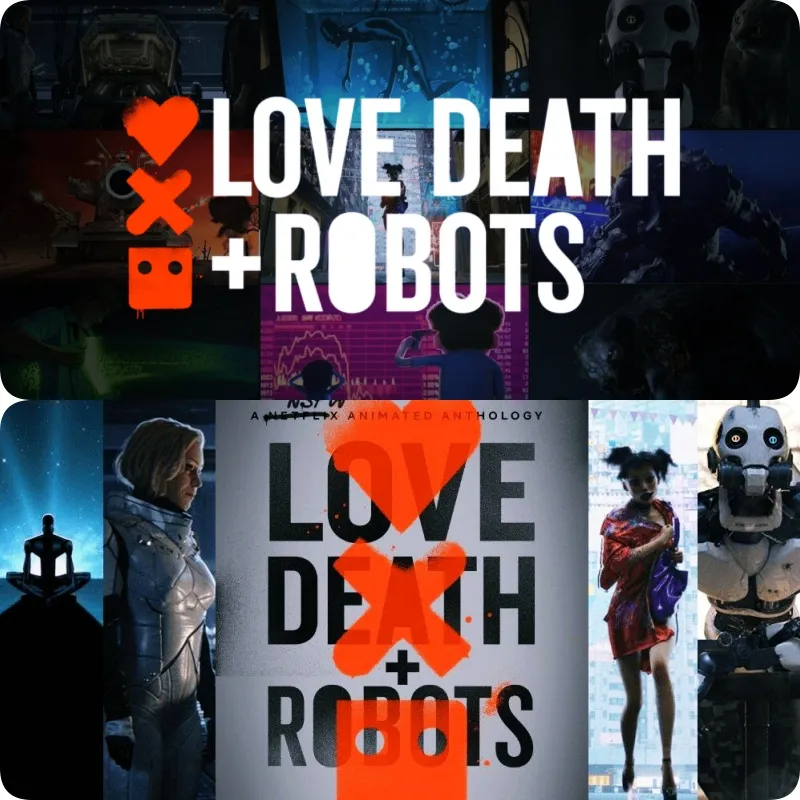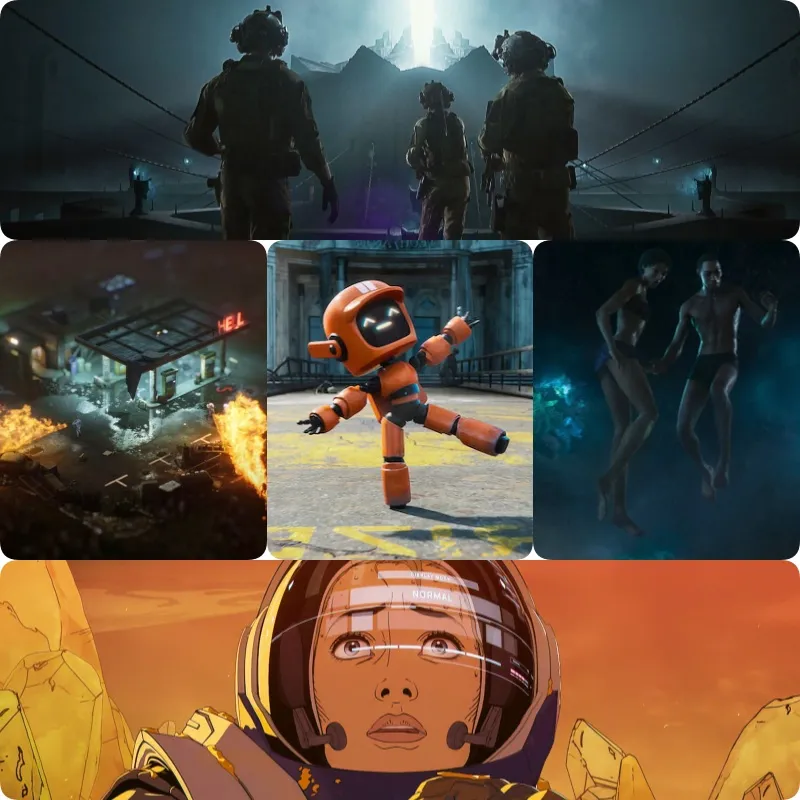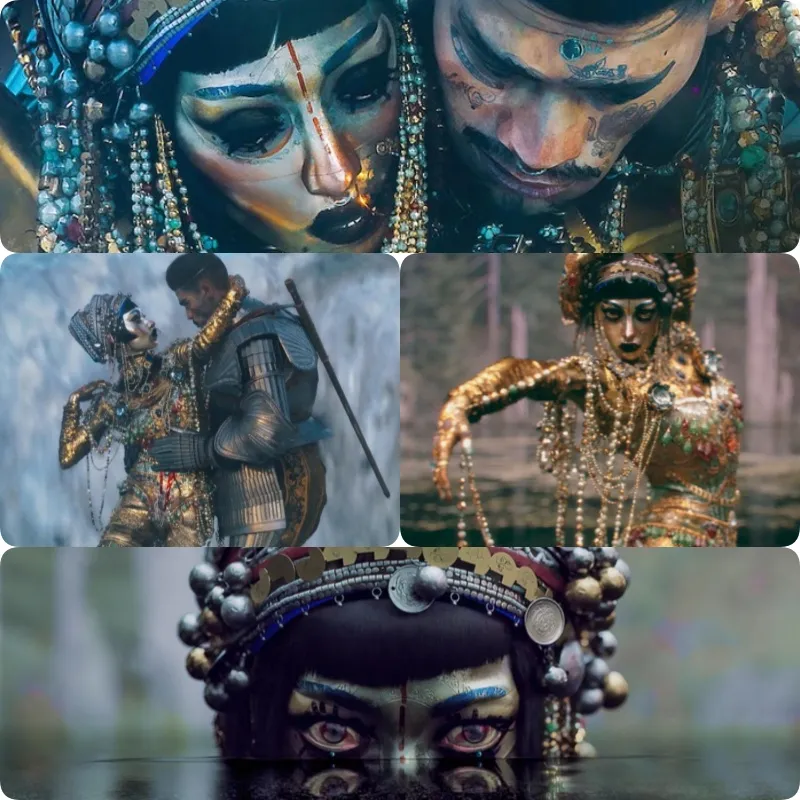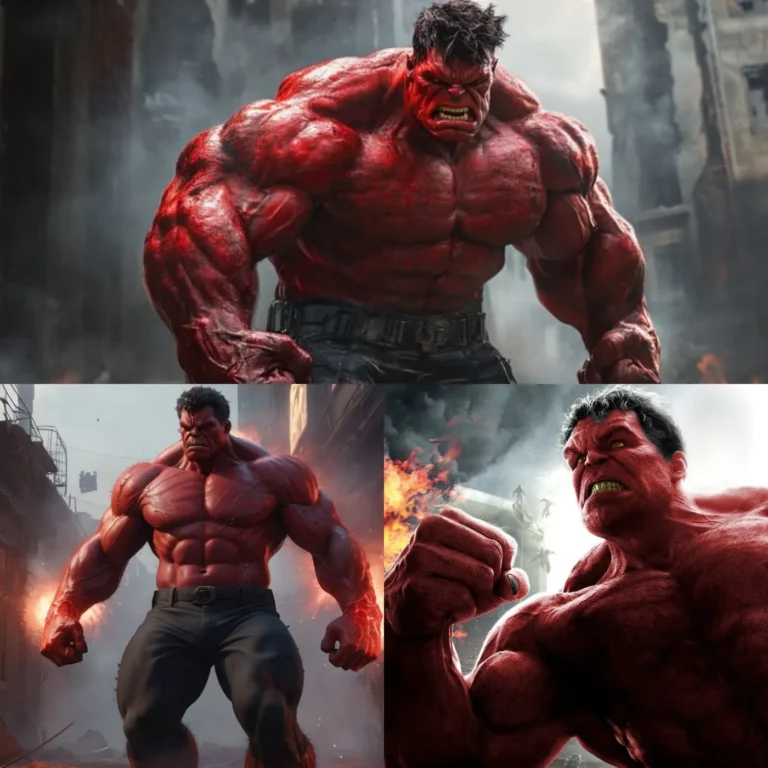
“Love, Death & Robots”: Exploring the Future and Human Fears
The short film series “Love, Death & Robots” has returned with its third season on Netflix, continuing with its signature diverse and impressive graphic style. However, this season not only presents visually striking images but also conveys timely and profound warnings about the future.
In recent years, post-apocalyptic films have become increasingly diverse and notable. Last year, “Don’t Look Up,” with its A-list cast, was nominated for an Oscar despite receiving poor reviews. This year, Cannes featured “Crimes of the Future,” and Netflix brought the new season of “Love, Death & Robots.” While continuing to focus on themes of family, death, and the future, this season offers deeper reflections on human decline and current ethical issues.

The Arrogance of Humanity
The season opens with “Three Robots: Exit Strategies,” which follows three robots traveling through time to study the extinction of humanity. Through satirical and humorous details, this episode highlights issues such as wealth disparity, environmental pollution, overhunting, and the harm humans have inflicted on nature, leading to the collapse of human society. The episode concludes with the last remaining inhabitant of Earth—a genetically modified cat—being launched into space to search for life in other universes. Genetically modified beings appear throughout the series, from the human-eating crab in “Bad Travelling” to intelligent rats in “Mason’s Rats” and genetically modified grizzly bears in “Kill Team Kill.” The episode “Night of the Mini Dead” also makes a strong impression with its zombie theme, emphasizing human insignificance in the face of diseases and natural disasters.
Ethical Dilemmas

In addition to warnings about impending dangers, Season 3 of “Love, Death & Robots” also raises significant ethical questions. The series often depicts humans grappling with personal interests versus communal benefits, forced to make decisions in extreme situations filled with primal fears.
For instance, in “Bad Travelling,” Captain Torrin faces a choice between sacrificing himself to save the people of Phaiden Island or surviving but endangering innocent lives. Although Torrin’s final decision seems reasonable, it raises questions about cunning and deception.
The live-action episode “In Vaulted Halls Entombed,” with its Eastern cultural influence, tells the story of a group of soldiers who must fight strange creatures and maintain their humanity against the call of a supernatural entity. They must decide whether to harm themselves to avoid possession or surrender. This is a classic ethical dilemma explored throughout the series.
Innovative Techniques

One of the key factors making Season 3 a global sensation is not only its unique and provocative content but also the advancements in animation techniques. Beyond the innovative and thought-provoking content, the animation of “Love, Death & Robots” has achieved a new level of sophistication, creating a distinctive cinematic language.
The episode “Night of the Mini Dead” impresses with its tilt-shift technique, creating a miniature effect similar to model photography. 2D episodes like “The Very Pulse of the Machine” and “Kill Team Kill” utilize the latest techniques to create smooth, captivating movements. In 3D, episodes such as “Swarm,” “Mason’s Rats,” and “Bad Travelling” provide a deep and engaging look into fantastical worlds. Notably, “Jibaro,” with its fluid motion and realistic character depiction despite being traditional animation, represents a significant advance in animation technology.
The continuous innovation in both content and animation techniques makes Season 3 of “Love, Death & Robots” a must-watch series, offering not only entertainment but also profound insights and warnings about the future of humanity.






